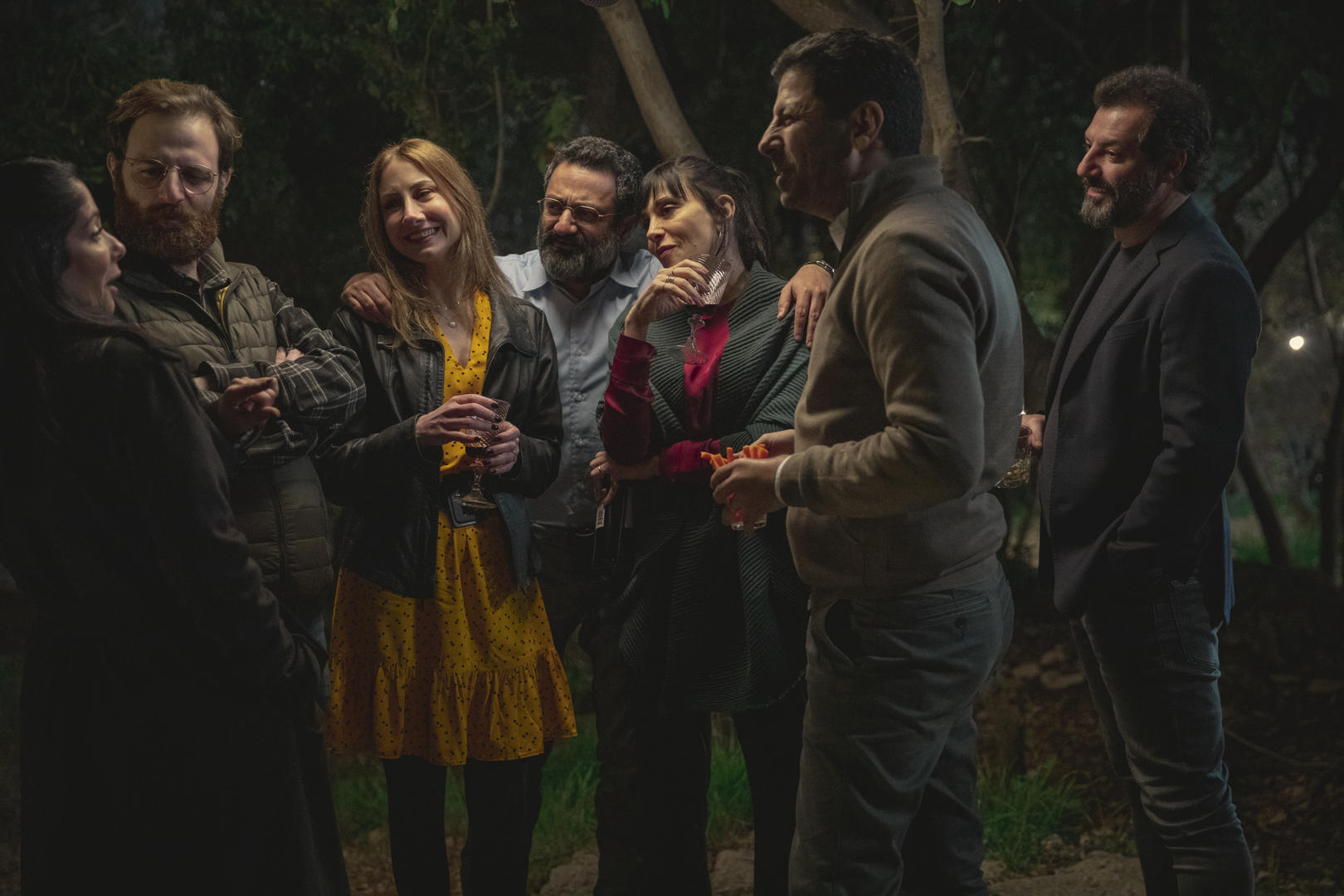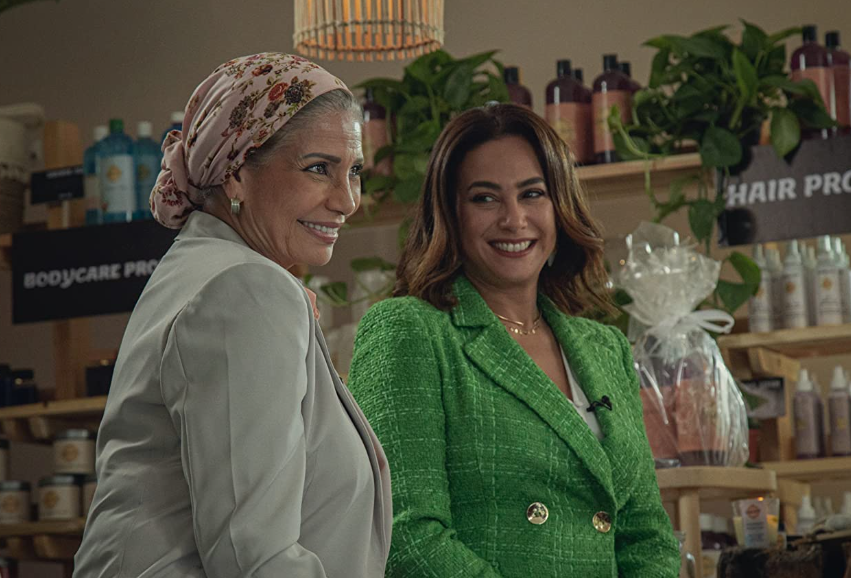MBC announced its upcoming Ramadan series Souq El Kanto on 23 February. Starring Amir Karara in the lead role, the series is an Arabic adaptation of ‘Peaky Blinders’, a crime drama chronicling the titular gang’s expansion in post-World War I England.
It is also the latest in a long line of remakes, revivals, and reboots produced over the past decade, with a noticeable spike in the past three years – a trend which seems to transcend all cultural and geographic boundaries.
On the international plane, it includes Hulu’s ‘How I Met Your Father’ (2022); HBO Max’s ‘Gossip Girl’ reboot (2022); and Netflix’s latest, ‘That 90s Show’ (2023), among many more. The former have all been the object of scathing reviews; with various critics pointing to the chasm between them and their venerated source materials.
Our side of the world, too, has caught on to the recycling craze – in my opinion, to humble results.
January 2022 witnessed the release of an Arabic remake of the 2016 Italian film, ‘Perfect Strangers’, where a group of close friends’ long-held secrets unravel over the course of a dinner party. My only memory of the otherwise bland Ashab wala A’azz is the controversy it sparked on social media.
Last Ramadan, OSN+ released an Arabic adaptation of hit American legal drama ‘Suits’, in which star lawyer Harvey Specter hires fraudulent genius Mike Ross as his associate. In ‘Suits Arabia’, the action takes place in Cairo, rather than New York; the characters speak Arabic, rather than English. Save for this change in location and language, the show offers little in terms of local flavor.
All this is to say I do not have particularly high hopes for the Arabic ‘Peaky Blinders’. The news nonetheless made me wonder two things: first, why are we seeing so many revivals, remakes, and reboots of older films and television shows? Second, why do so many of these reincarnated media fail to live up to their beloved predecessors?

Revivals, remakes, and reboots in the age of streaming services
Remakes are nothing new to popular culture and especially not to big studios, which have often built on existing cult classics throughout cinematic history. Speaking to Cosmopolitan, film scholar Matthew Jones nonetheless noted that reinventions of old material tend to spike up at certain times in history – namely, times of financial hardship.
The reason for this, he explained, is the notion of ‘pre-sold property’: an upcoming remake has a built-in audience of fans of the original. As such, it represents a safe financial bet for the studios producing it, because it is guaranteed to sell. The global economic crisis, therefore, is one reason for the surge of recycled media seen in the wake of the COVID-19 pandemic.
Another culprit is the rise of streaming services as one of the main ways people consume media. With so many platforms to choose from, each one has to find ways to set itself apart from an ocean of competitors.
For Netflix, which found itself forced to remove many classics from its platform – e.g, ‘That 70s Show’, ‘How I Met Your Mother’ – the solution lies in bringing fresh new faces to beloved stories, or alternatively, fresh storylines featuring a familiar cast. After all, its first dip into the pool of original programming was its hit 2013 remake of the British series ‘House of Cards’.
For other streamers joining the game, many of which are run by big studios, the key to attracting more subscribers is to leverage their existing intellectual property. To Disney+ executives, for instance, pumping out endless ‘Star Wars’ content makes better financial sense than acquiring rights to new and potentially risky source material.
Two factors might help explain why so many of these recycled offerings fall so short of the original.
The first is a plain lack of financial incentive to go beyond a mere rehash of the source material. Nostalgia is a powerful drug. Despite mixed reviews, Disney+ continues to churn out remakes of childhood classics at lightspeed, and for all the criticism they have garnered, these films and series continue to draw in subscribers and ad sales.
The second, for streaming platforms, is the need to appeal to as wide and diverse an audience as possible.
For a service like Netflix, an Arabic remake of ‘Perfect Strangers’ – its first Arab original feature film – was one way to capture a share of the regional market. Its 3.5 million Arab viewers, however, comprise less than two percent of its global subscriber base. Therefore, a costly production like this cannot exclusively cater to a marginally profitable niche.
The film, like most Netflix originals, was made available to various segments of its global audience of over two hundred million subscribers – including France, where it ranked second on the platform’s most viewed charts after its release.
Trying to appeal to too many people at once is almost always a recipe for bland ambiguity. Trying to emulate cultural specificity while catering to a global audience can result, for lack of a better phrasing, in a big old mess.
Even Dubai-based player OSN, which built its brand on an impressive catalog of international offerings, still faces the challenge of catering to a regional audience while also living up to its cosmopolitan image – a challenge which is exacerbated by its rapid expansion and growing number of international partnerships.

What makes a good remake, revival, or reboot?
While many reincarnations of old media fail to reignite the source material’s spark, a popular viewpoint among critics is that two key qualities underpin a good remake, revival, or reboot.
The first is that it does not try to be dogmatically faithful to the original, and instead, risks making drastic changes where narratively viable or necessary. The second, and most crucial, is that it provides a substantial update to the source material so as to be able to stand as a story of its own.
A local example which I find lives up to these two standards is the 2022 Netflix show ‘Finding Ola’, which is a revival of the 2010 Egyptian comedy series ‘Ayza Atgawez (‘I Want to Get Married’).
Both shows star iconic Tunisian actress and producer Hend Sabry in the lead role of Ola Abdel Sabour; Egyptian screen idol Sawsan Badr as her overbearing mother, Soheir; and Egyptian actor and singer-songwriter Hany Adel in the role of Ola’s elusive husband, Hesham. The two series share core narrative and stylistic elements, like Ola’s artful breaking of the fourth wall and her mother’s unhealthy fear of social judgment.
Yet, while it drops frequent and subtle references to its 2010 predecessor, Finding Ola solidly stands as a story of its own, managing to resonate with old fans and newcomers alike.
Watching the show without context from ‘Ayza Atgawez, viewers see the powerful story of an Egyptian divorcee learning to define herself outside of marriage and motherhood. She faces all the expected backlash from a society where women’s personal liberties and sexualities continue to be deeply stigmatized, and overcomes these hurdles with grace.
Coming to ‘Finding Ola’ from ‘Ayza Atgawez, I was struck by some of the drastic changes to our protagonist’s lifestyle. No longer a government employee living in a modest neighborhood, Ola seems to have reaped the fruits of her husband’s lucrative work as a well-known psychiatrist. I also missed the political flair of the original, which tackled issues like emigration and class disparity – things which the new Ola and her family largely seem insulated from.
Nonetheless, while likely owed to the aforementioned need to appeal to a broader audience, these elements still make sense in the story’s broader context. The whole point is that Ola, in her unwavering race towards marriage, has lost herself. She can neither go back to being the naively romantic girl-next-door of decades past, nor afford to stay in her illusory cocoon.
From a marriage-obsessed thirty year old to a divorced mother of two, viewers have yet to learn who Ola Abdel Sabour really is outside of her relationship to marriage. ‘Finding Ola’ invites us along the whimsical journey of answering this question alongside its protagonist.
For international viewers, her struggles with dating, launching her business, and navigating midlife are relatable despite an unfamiliar language and context. For those of us viewing the show in Egypt, it’s a chance to reflect on our own society – what’s changed, what hasn’t, and how these changes affect different strands of an unequal society.
While I am still a faithful fan of the original, as a viewer, ‘Finding Ola’ offered me hope, both for the protagonist’s personal growth and for the revival trend at large.
The show hits the mark in three key ways: it is universally relatable without completely losing touch with its context; it provides enough recognizable features and nods to its source material to draw in original audiences; and departs from its predecessor in a way that is both logically sound and narratively meaningful.
I still can’t say that I am particularly enthusiastic about the Arabic ‘Peaky Blinders’, but the former example proves that while we might live in the age of recycled media, this does not necessarily need to translate to mediocrity. One can hope its success in various regards will serve as a model for future works building off of existing material in impactful ways.
Are we witnessing the death of originality?
Finding Ola proves that revivals are not doomed to failure, but the question remains of whether we are doomed to an endless media (re)cycle of old franchises and titles being rebranded and sold to us as new. Some critics think so, and many have pointed to the remake epoch we are living through as the death of originality.
Jones, however, notes that upticks in remakes and revivals have marked nearly every economic downturn in film history. While studios use them to generate easy cash in difficult times, this financial cushion can eventually allow them to take risks with different, out-of-the-box creations.
For instance, some point to Netflix’s expansive catalog of original productions as a possible byproduct of the safety net afforded by its more reliable rebrandings. Are they any good? Opinions vary, but the fact is that they are actually original, as opposed to all the above examples.
New streaming services with less skin in the game may need to rely almost entirely on their intellectual property for some time, but once they find their footing, there may be a chance that we start to see new content from Disney, Paramount and other giants.
Ultimately, though, what will dictate when and if this trend comes to a close is our own behavior as consumers. So long as there is an audience for remakes and revivals, there is a financial incentive for studios to keep producing them.
The question becomes: when will enough people stop purchasing movie tickets or cancel their streaming service subscriptions for these studios to halt the recycling craze and put more of their resources towards creating fresh content? The answer, I fear, is yet to be determined.
The opinions and ideas expressed in this article are the author’s and do not necessarily reflect the views of Egyptian Streets’ editorial team. To submit an opinion article, please email [email protected].







Comment (1)
[…] Source link […]